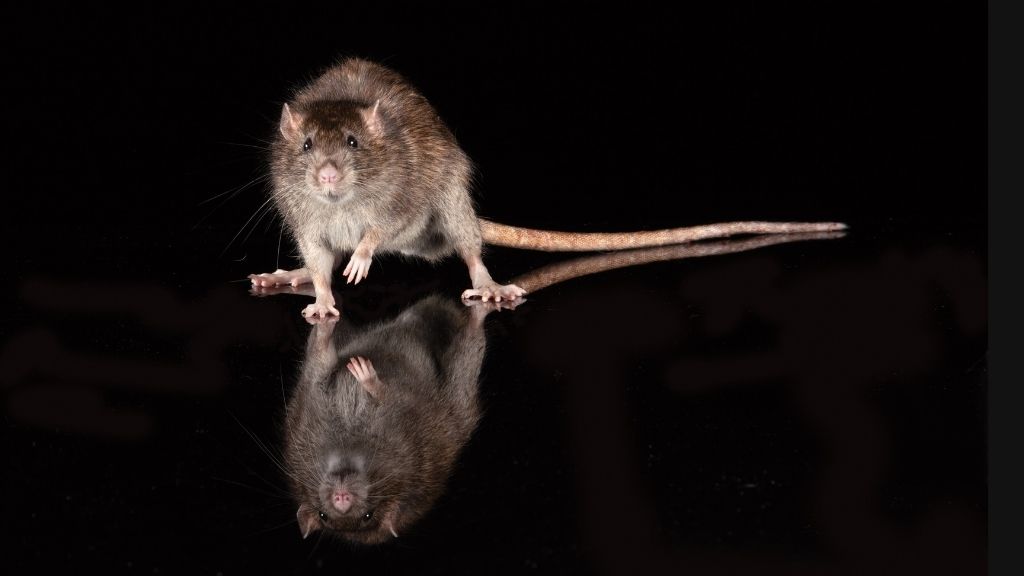Omicron variant may have evolved in rats, one theory says
There are several theories as to how the omicron variant evolved.

The newly identified omicron coronavirus variant may have evolved in a nonhuman animal species, potentially a rodent, some scientists suggest.
According to this theory, an animal may have picked up SARS-CoV-2, the virus that causes COVID-19, around mid-2020, STAT reported. After accumulating many mutations in the animal, the altered coronavirus then would have made the jump back to humans. This chain of events can be described as reverse zoonosis, in which a pathogen jumps from humans to animals, followed by zoonosis, in which a germ passes from animals to humans.
One key piece of evidence in support of this theory is that omicron diverged from other SARS-CoV-2 variants very far back in time, Kristian Andersen, an immunologist at the Scripps Research Institute, told STAT.
Related: 20 of the worst epidemics and pandemics in history
Compared with other theories about omicron's origin, such as it evolving in an immunocompromised person or in a human population with poor viral surveillance, "this reverse zoonosis followed by new zoonosis seems more likely to me, given just the available evidence of the really deep branch," meaning the early split from other coronavirus variants, "and then the mutations themselves, because some of them are quite unusual," Andersen said.
Omicron carries seven mutations that would allow the variant to infect rodents, such as mice and rats; other variants of concern, like alpha, carry only some of these seven mutations, Robert Garry, a professor of microbiology and immunology at Tulane Medical School, told STAT. (Garry also said it's still unclear whether omicron emerged in an animal or human host.)
In addition to these "rodent adaptation" gene variants, omicron carries a slew of mutations not seen in any other versions of SARS-CoV-2, and some scientists take this as potential evidence that the variant emerged in an animal host, Science reported.
Get the world’s most fascinating discoveries delivered straight to your inbox.
"It is interesting, just how crazily different it is," Mike Worobey, an evolutionary biologist at the University of Arizona, told Science in reference to omicron's genome. "It does make me wonder if other species out there can become chronically infected," which could drive the emergence of new variants with many mutations. But at this point, Worobey suspects that omicron evolved in an immunocompromised human, not in an animal.
This is one of the leading theories other experts have suggested, Science reported. In this scenario, an immunocompromised person would have contracted COVID-19 but developed a chronic infection, in which they couldn't rid their body of the virus; as it continued to multiply, it picked up many mutations. Evidence suggests that the alpha variant may have acquired mutations in this way, but this has yet to be confirmed for omicron, Science reported.
If it didn't emerge in either an animal or immunocompromised person, Omicron may have first appeared in a population with poor viral surveillance, meaning it may have spread and evolved, unnoticed, for upwards of a year. "I assume this evolved not in South Africa, where a lot of sequencing is going on, but somewhere else in southern Africa during the winter wave," Christian Drosten, a virologist at Charité University Hospital Berlin, told Science.
But for this to be true, the affected population would have had to be extremely isolated, such that omicron didn't spread much beyond its ranks, said evolutionary biologist Andrew Rambaut of the University of Edinburgh. "I'm not sure there's really anywhere in the world that is isolated enough for this sort of virus to transmit for that length of time without it emerging in various places."
Read more about the potential origin of the omicron variant in STAT and Science.
Originally published on Live Science.

Nicoletta Lanese is the health channel editor at Live Science and was previously a news editor and staff writer at the site. She holds a graduate certificate in science communication from UC Santa Cruz and degrees in neuroscience and dance from the University of Florida. Her work has appeared in The Scientist, Science News, the Mercury News, Mongabay and Stanford Medicine Magazine, among other outlets. Based in NYC, she also remains heavily involved in dance and performs in local choreographers' work.


